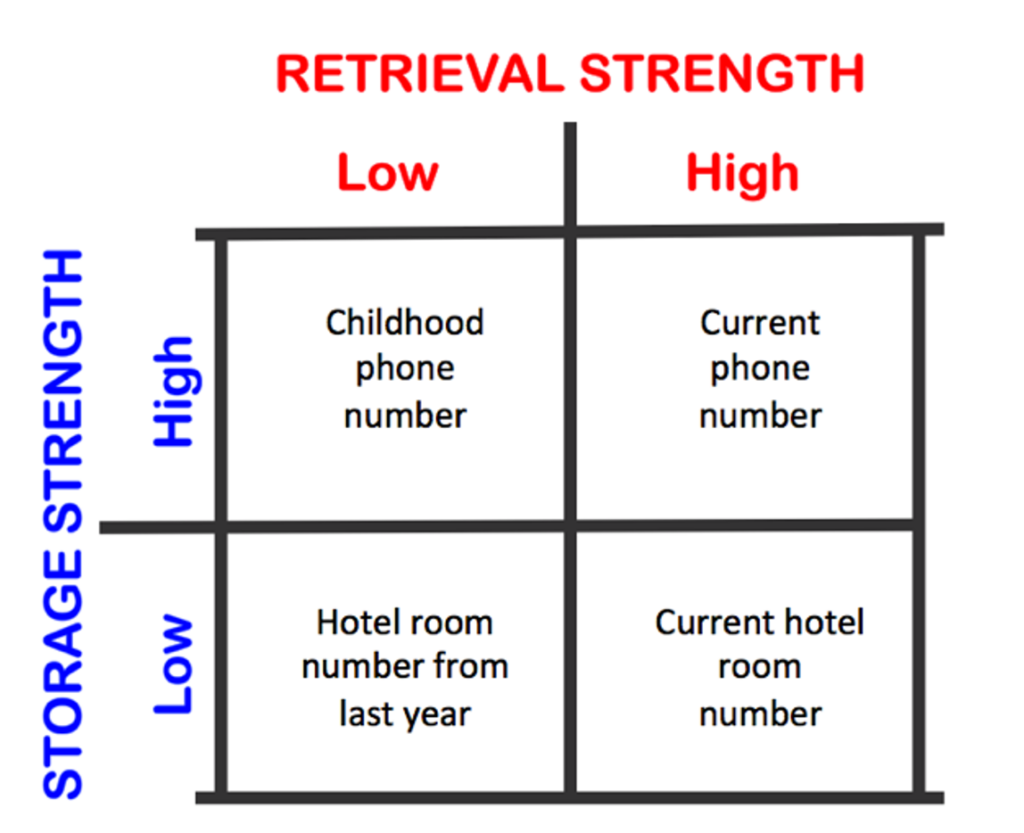Download the presentation of this section.
Building on one of the idea ‘Forgetting is normal – but can be slowed or prevented by periodic revisiting and review’: let’s look at some examples of what these things can mean, using two concepts retrieval strength and storage strength. We can compare the two in this Matrix. We might have something that’s of low retrieval strikes but high storage strength.

It could be, for example your childhood phone number. That’s something that we tend to perhaps remember but it’s sort of difficult to retrieve it we might need reminder but it is there. On the other hand, our current phone number is something we probably do remember more easily we have high retrieval strength and storage strength is good as well. Something that would have low retrieval strength and low storage strength could be something relatively trivial; such as the hotel room number from last year’s holiday. It could also be something that’s non-trivial but either way if it hasn’t only got low retrieval strength low storage strength, it’s going to be very difficult for us to remember it.
On the other hand if we are currently in a hotel, we probably can remember that number so it’s got low storage strength but high retrieval strength. It’s not something we’re going to know particularly in a year or two’s time.
Let’s have a look at how we store and retrieve information. The video will explain how Cognitive Load Theory works in the context of how we store information in schema.
Source video: David Didau, BBC, https://www.bbc.co.uk/teach/teacher-support/latest-theories-on-how-we-learn/zjwm92p
Remember the last sentence in the video: “We may still have a lot to learn about how our minds work, but designing educational experience is based on understanding these points is a step in the right direction”.
